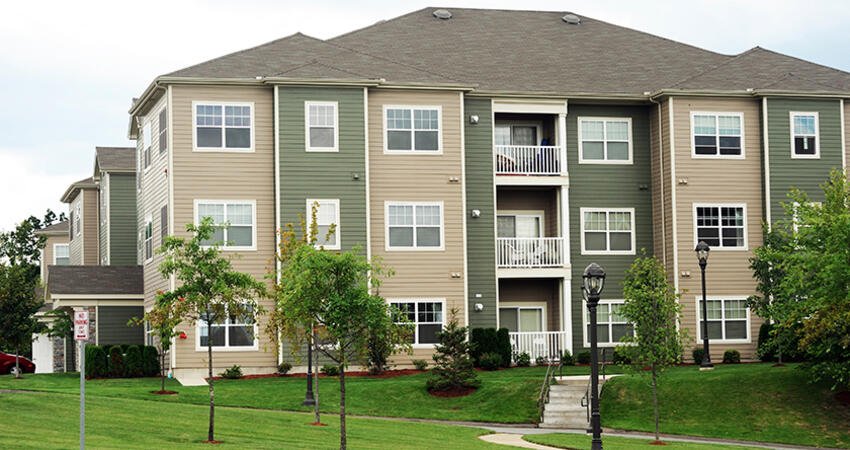
(ND700/Shutterstock)
Homelessness Is a Housing and Racism Problem
Housing ends homelessness. Although this claim seems logical and obvious, it has come under attack by people frustrated that the growing visibility of encampments in many US cities is affecting their perceived safety and quality of life.
As anyone working to provide housing for people who are unhoused can attest, residents’ vitriol on social media and in community meetings about unsheltered homelessness often turns into declarations that homelessness is an addiction and mental health problem. Critics of Housing First and housing-based approaches amplify these complaints.
Motivated by this type of backlash they were seeing in the Seattle area, Gregg Colburn and Clayton Page Aldern analyzed data from 30 of the largest metropolitan areas in the US and report their findings in the recently released book, Homelessness Is a Housing Problem. The book adds compelling evidence to what researchers and advocates have known for decades: high rates of homelessness result from structural factors—namely, challenges in the housing market and structural racism.
These findings can guide policymakers and advocates who want to better understand and communicate about the factors that explain high rates of homelessness in their cities. To expand on these findings, future research should include a stronger focus on racial equity in formulating policy responses.
The root causes of homelessness
In discussing why homelessness is more prevalent in some cities, Colburn and Aldern make a helpful distinction between “precipitating events” and “root causes.” Despite public perception that individual vulnerabilities like behavioral and mental health status are major drivers to homelessness, these factors affect a minority of people who are unhoused, and the vast majority of the 40 to 52 million people struggling with mental illness or substance use disorders don’t experience homelessness. These vulnerabilities may increase risk but are not root causes of homelessness, and, of course, substance use and mental health disorders are often consequences of housing instability, developing from the trauma of life on the streets.
Colburn and Aldern analyze a variety of variables to understand what accounts for the differences in rates of homelessness between regions. In particular, they test a series of popularly held beliefs about what may create housing instability, including individual characteristics, like mental and behavioral health status, employment, poverty, and race, and structural factors, such as regional poverty rates, local political environment, the local social service system, and weather. (I’ve heard many times, “LA has so many homeless people because the weather is nice!”). None of these popular explanations hold up in the authors’ statistical analysis.
If these factors don’t explain variation in homelessness, what does?
They found the strongest predictors of differences in rates of homelessness across regions have to do with housing market challenges. In particular, the authors find that areas with tight housing markets (i.e., high levels of rent and low rental housing vacancy rates), like those along the West Coast and high-cost eastern cities, have the highest levels of homelessness. Other analysis has found that levels of income inequality explain regional variation in homelessness in the US, and when coupled with the Colburn and Aldern analysis, these findings clarify the assertion that “homelessness is a direct result of how we construct and operate our cities.”
Homelessness is also a racism problem
Another important factor in how cities were developed and operate is the depth of structural racism that has determined where and how people live and work. As Colburn and Aldern acknowledge, “Racism is central to discussions that aim to reveal the causes and consequences of homelessness.” For example, research illustrates deep racial disparities in homelessness and its related systems (e.g., criminal legal, child welfare, education, health), particularly for Black and Indigenous residents.
Colburn and Aldern conclude, however, that racial makeup does not explain regional difference in homelessness levels because it tends to be highest in areas with relatively low levels of Black residents, such as Boston, Portland, San Francisco, and Seattle.
This book makes an important contribution to our understanding about why certain cities and regions struggle to address homelessness, with housing at the center of the solution. But it could be stronger in identifying how to address the structural racism at the core of the problem. Centuries of discrimination, from slavery to Jim Crow and segregation to redlining and mass incarceration, have generated intergenerational racial inequality that has created the conditions for housing insecurity and homelessness today.
A new body of research is identifying how these conditions play out. Overrepresentation of people of color in housing, social welfare, and criminal justice systems lead to much lower exits and higher returns to homelessness than their white counterparts, leaving long-term effects and risk into late adulthood. Even as the homelessness system has become more evidence-based, evaluations of assessment tools (PDF) and best practices like permanent supportive housing demonstrate that these interventions do not help Black residents equitably and instead reinforce patterns of discrimination.
What would it take to achieve housing justice?
The research in Homelessness is a Housing Problem is commendable and will be helpful for practitioners and advocates working to push for housing-based solutions to address the high level of homelessness in many cities. They recommend three big solutions to addressing homelessness: changing perception of the problem, providing enough funding, and gaining a broader understanding of systems change. All of these are necessary, but without a stronger focus on how to advance racial equity, these are insufficient.
Additional resources and greater coordination across systems supported by a better understanding of homelessness as a housing problem are all important, but unless they are accompanied by systems, policies, and practices to redress historical racism, they will likely reinforce racial disparities, not repair them.
The recommendations would be strengthened by evaluating the role that structural racism (e.g., in housing and employment discrimination and criminalization and incarceration policies) has played, and continues to play, in creating high levels of housing insecurity. This will add to the complexity of the policy prescriptions and is vital to advancing the growing field of housing justice.
One example of this approach is the 2020 report Facing History, Uprooting Inequality: A Path to Housing Justice in California (PDF) from PolicyLink, which analyzes the severe housing challenges in California with a racial equity lens. It traces the historical and structural forces that have produced the housing shortage and disproportionate outcomes by race. Using this analysis, the report provides a series of comprehensive recommendations—including reining in real estate speculation, ending the criminalization of homelessness and encampment sweeps, enacting tenant protections and protections from predatory lending and wealth stripping, progressive tax reform that provide renters tax credits, transferring of compensation of resources to communities of color, and ensuring low-income communities of color guide planning and decisionmaking—that address the structural factors that have led to today’s housing insecurity. Replicating this approach could help policymakers and advocates create solutions that address the root causes of homelessness and ultimately help achieve broader racial and housing justice.


